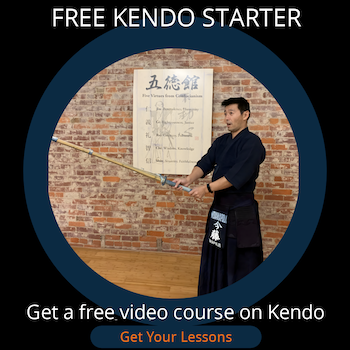Need Kendo Instructions?
You Got It!
You Got It!
Tsuki, when to start to practice and how ?
by Min Chih Wang
(Costa Rica)
I always hear from my sensei and other higher ranked Senseis about one must start to practice Tsuki when one has became more experienced in Kendo (at least 3 dan and above), because Tsuki is a dangerous technique, beginners should not practice it, and people below 3 dan should not use it when doing Jigeiko or Shiai geiko.
However, I recenty read an article by George McCall (from Kendo 247. net), in which he suggests that students should be introduced Tsuki in their early stages of learning because it not only ensures students could learn it quickly but also could overcome their fear in receiving it.
I would like to know your opinion about this.
Also I would like to know your suggestion about how to practice properly with someone. I have a Kendo dummy in my Dojo and I use it to practice tsuki also .
Thanks
Answer: Thank you for your question, Min! Many people say different things so you should determine these on your own. Here is my thoughts.
Tsuki is dangerous. You could hurt your opponent/training partner really badly. Especially if your tsuki gets into your opponent's throat by accident as your opponent is coming forward. Imagine how powerful your tsuki can be when both of you and your opponent comes forward.
That is why it is important for us to execute a tsuki when we can control our shinai. If you can control your shinai, you can quickly pull out your shinai before your opponent gets hurt. Without a good control of your shinai, it doesn't matter what dan you are, you shouldn't execute a tsuki.
Another thing you should consider is that if your opponent knows how to receive a tsuki or not. If your opponent doesn't know, you should teach them.
In judo, they learn ukemi, how to receive throws, before they learn how to throw. So they
Introducing tsuki at early stage: Yes, this might work if you are in an environment like Japan where you are surrounded by highly skillful kendoists.
The oldest mukae-zuki (you get a thrust when striking men) I remember that I got was when I was 12. I was an elementary student. And I got the tsuki from a sensei (6 or 7-dan). He knew how to execute such tsuki; hard enough so I could learn and soft enough so I wouldn't get hurt. And he taught me how to receive such tsuki.
This is an ideal environment to learn. Do you have such environment? If you do, then it is OK. If you don't then you shouldn't introduce a tsuki at early stage.
I tell my students not to execute a tsuki on lower grade holders. And if they want to, they can tsuki me. I know how to receive.
If you want to learn how to tsuki, they should learn how to receive first. Questions you should ask yourself or give to your fellow kendoists.
- Do you know what you should do if you get a tsuki on your throat?
- Can you pull your shinai out of the throat before you hurt your opponent?
Another thing.
- Can you tell if your shinai is broken during a jigeiko?
- Can you tell if your opponent's shinai is broken during jigeiko?
This is another skill you need before you execute a tsuki.
Imagine you execute a tsuki and miss tsuki-dare and directly slide on your opponent's throat with splinters on your shinai. The splinters go into your opponent's throat. That could kill your opponent.
I cannot give you the number of dan or how old you should be to learn tsuki. I just know you must be highly skillful and can tell if your shinai and your opponent's shinai don't have splinters.
Hope this helps!

